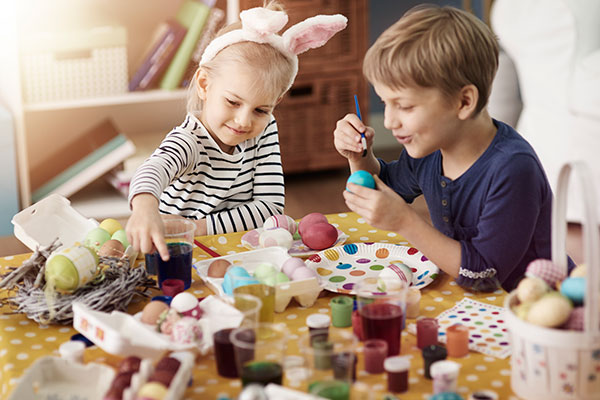Equipping Children for Independence

I was inspired to write this article after a day spent teaching Grade 1 and 2 children. As the Visual Arts teacher I take four classes of the same year level a day. The lesson I prepared was two finishing off tasks. The first half was painting some clay pieces they’d made earlier and the second half was continuing to make brickwork on cardboard pyramids. When you have a class of 28 they are going to start and finish at different times, making transition to the next task tricky. As is my usual habit, after the first class I am able to refine my instruction and organisation techniques to improve the functioning of the rest of the classes. I was in for a shock that day though – these children have little independent problem solving ability!
I thought I was thoroughly prepared – all resources were ready, I pointed them all out physically and verbally and I explained the task in simple steps. I kept instruction time to a minimum, appointed monitors to hand out smocks and unfinished art pieces and modelled the task. I covered my behaviour expectations regarding paint and the work space and got them to repeat it back to me. Apparently this wasn’t enough!
In each class of 28 I would expect 4-5 to need assistance for a variety of reasons. These classes had 4-5 kids NOT needing assistance and the rest clamouring for assistance/reassurance/permission. “What do I do next?” “Where are the scissors?” “Is my work good enough?” “Where are the fine liners?” “I can’t find a space to work” “Where are the pencils?” “Where do I put my paint brush?” “I’ve finished, where do I put my work?” “Where are the erasers?” I was wishing my name was Anonymous!!
After the first lesson of this I gave the next class a challenge to try and work things out for themselves before asking me. It improved things a little bit.
Normally when something doesn’t operate optimally in a lesson I teach I spend some time in reflection. I’m always looking to improve my teaching practice. Here’s my thought process after this crazy day:
- Lessons where multiple activities/resources are needed require extra thought regarding how they operate.
- It’s not always possible to minimise what we are doing to make it easier, especially in Visual Art.
- The previous two weeks they had had a CRT due to a meeting and camp so they were out of my normal routine.
- After the first class I made changes to the running of the remaining three – more changes were needed that I couldn’t make on the fly.
- I don’t cope very well when multiple children lack independence, especially when I know there’s no obvious reason for it.
- I need a better strategy to avoid this happening again.
- I need to do some purposeful teaching around this topic, probably across multiple weeks, to improve their independence.
- I only have them an hour a week and they love art so teaching has to be super brief.
- Perhaps I could link it to some kind of reward program at first.
Before sitting down to write this article I looked up the definition of learned helplessness. I thought that this is what the kids were exhibiting. Maybe their home room teachers and/or parents had different expectations to me and were not bothered by their behaviour. The definitions were a little extreme!
‘Learned helplessness occurs when an animal is repeatedly subjected to an aversive stimulus that it cannot escape. Eventually, the animal will stop trying to avoid the stimulus and behave as if it is utterly helpless to change the situation. Even when opportunities to escape are presented, this learned helplessness will prevent any action.’
I had to revise my diagnosis. What the children were really lacking was independence. Of course, some of this comes with maturity and age, and some children have additional needs which can curb their independence.
How can I improve the children’s independence when I only have them for an hour each week?
- Be consistent in my expectations.
- Explicitly teach my expectations.
- Encourage the students that I know their brains are smart enough to try to problem solve.
- Keep resources in the same positions so children will learn where to find them.
- When children approach me with a question, ask them what they think the answer is.
- Suggest children ask a friend for an answer before they come to see me.
- Use appropriate posters/anchor charts and refer to these often.
- Ask 3 before you see me! (ask 3 peers before you ask the teacher).
What strategies do you use to improve children’s independence?

